Few industries have seen the level of growth in recent years compared to the solar industry. There’s a number of reasons for this, ranging from federal tax credits to falling installation costs. However, some consumers are still hesitant due to the initial investment required for solar panel installation. This is why solar installers should stress the long-term benefits when pushing sales to their customers. Solar panels pay for themselves over time, and initiatives like net metering (also known as solar net metering) help make that happen even faster.
So, what is net metering? How does it help consumers save more on their investments? And how can solar installers levy net metering to grow their business?
What is net metering?
If you Google “net metering program,” you’ll find some variation of the following definition: “Net metering is a billing mechanism that credits solar power owners for their contributions to the electric grid.” Cutting out the jargon, here’s what that means for solar energy system owners.
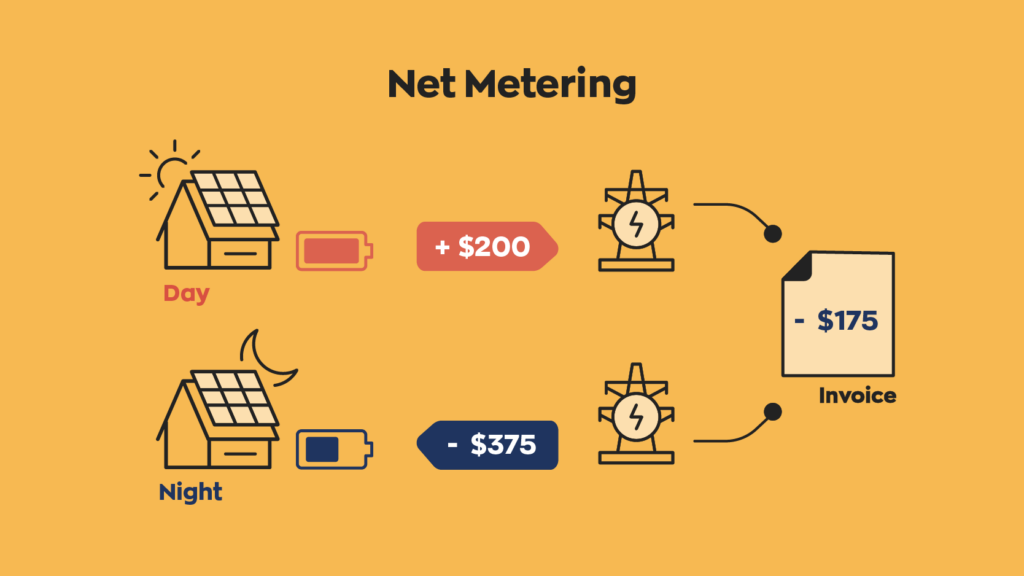
Let’s say it’s a beautiful sunny day, and you’re spending most of your time outside gardening. The solar panels on the roof are working overtime, storing loads of energy, and at the same time, you’re not using much electricity since you’re in the garden. In this situation, it’s plausible that you’ll produce more electricity than you need. Net metering programs use this clean leftover electricity by sending it back to the grid for use elsewhere.
Power companies credit your account in exchange for the electricity you provide to the grid. When the next billing cycle happens, they take this credit into account. Depending on their policy, this can lead to a negative balance that carries over to the next cycle. However, keep in mind that some power companies impose time limits on this credit.
What are the benefits of solar net metering?
The biggest benefit of net metering is that owners will be able to pay off their system more quickly. While this doesn’t lead to outright profit, it does save more money in both the short and long term.
Outside of individual benefits, net metering aims to address more broad-scale issues. First and foremost, implementing a solar solution is an eco-friendly decision. Along with those tax credits we mentioned, net metering is an incentive that pushes consumers towards installing a solar power system.
Second, net metering reduces the stress on the electrical grid. It’s no secret that electrical grids are struggling to meet modern energy demands. Providing clean energy on-site reduces the need for electricity, eliminating or alleviating a stress point.
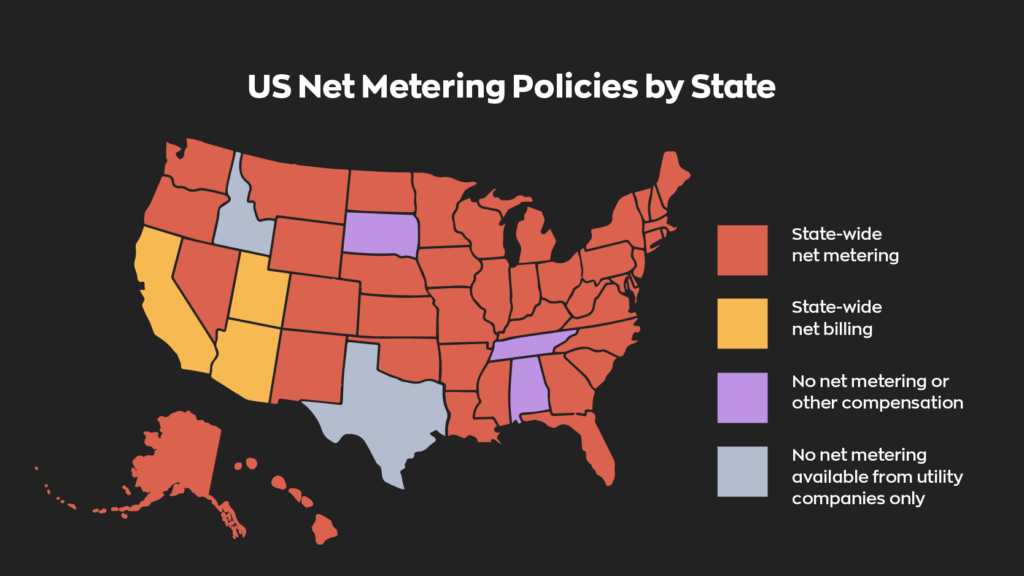
What are the challenges of solar net metering?
While net metering is overall a “net” positive, there are still some pain points. There are some misconceptions about the billing process and some intrinsic flaws in the implementation.
First, net metering works on surplus electricity. If the solar power system generates more electricity than the home uses, that power goes elsewhere. In return, the power company credits the home’s account. However, this does not mean the homeowner is “selling” electricity. The credit on their account is just that—credit. There is no way to claim these credits for cash in hand.
Secondly, net metering naturally requires a connection to the grid. For those whose goal is to go completely off-grid, it’s not a valid option. That being said, there might not be a choice. At the time of writing, 38 states have mandatory net metering mandates. This introduces another issue.
Some areas charge hook-up fees to connect to existing grids. The financial cost may be minimal, but obtaining permits requires some bureaucracy.
What do you need to implement net metering?
From here on, we’ll be flipping the script a bit. Until now, we’ve been addressing the topic from the consumer’s perspective. After all, it’s important for solar installers to understand how these things work as well. Customers will expect explanations, and it’s essential to answer any questions they may have. Solar is an expensive investment, after all.
On a physical level, setting up net metering is pretty straightforward. Most modern solar equipment already has net metering capability, meaning you’ll just have to make some minor tweaks. In other cases, you might require a new meter, but such cases are outliers rather than the norm.
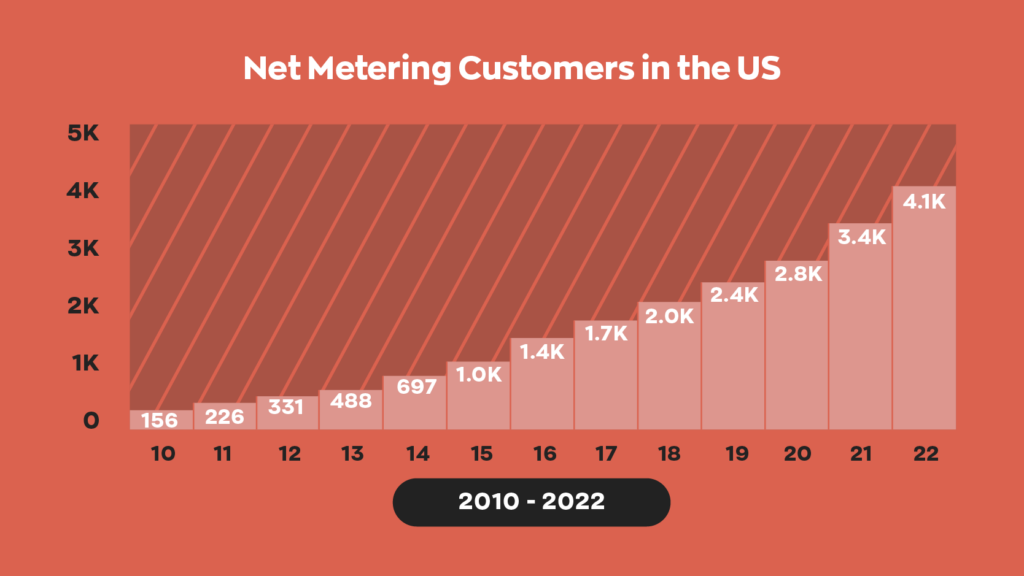
Outside of these requirements, you’ll need permission from the area to hook into the grid. There may also be a hook-in fee. While usually a nominal amount, actually receiving permission can take some time.
How can solar installers take advantage of net metering?
While net metering is a consumer-oriented billing system, solar installation companies can use it in marketing. There’s generally two reasons that someone installs a solar power system: they’re either eco-conscious, investing in long-term savings, or some combination of the two. Net metering appeals to both of these aspects. A proper net metering program reduces the solar payback time and brings savings more quickly. That little bit of saving adds up quickly over time.
Net metering also lowers the overall dependence on fossil fuels. It’s nearly impossible to calculate individual impact, but more clean energy in the grid means fewer emissions. Offering net metering and highlighting the benefits is an excellent way to show your company’s ethos aligns with customers’.
It also pays to keep the local legislation in mind. Building relationships with energy companies can help streamline the process of joining the grid. Being able to offer quicker installations is a big deal in the industry. The faster things are online, the quicker your customers save.
How inFlow can help solar installers
Outside of industry-specific ideas, it’s also important to treat your solar power business just like that– a business. It’s arguably even more important, considering the high individual cost of installing a solar power system. A lot of that cost comes from the price of materials. Solar panels are expensive; damaging or losing even one can seriously impact your bottom line.
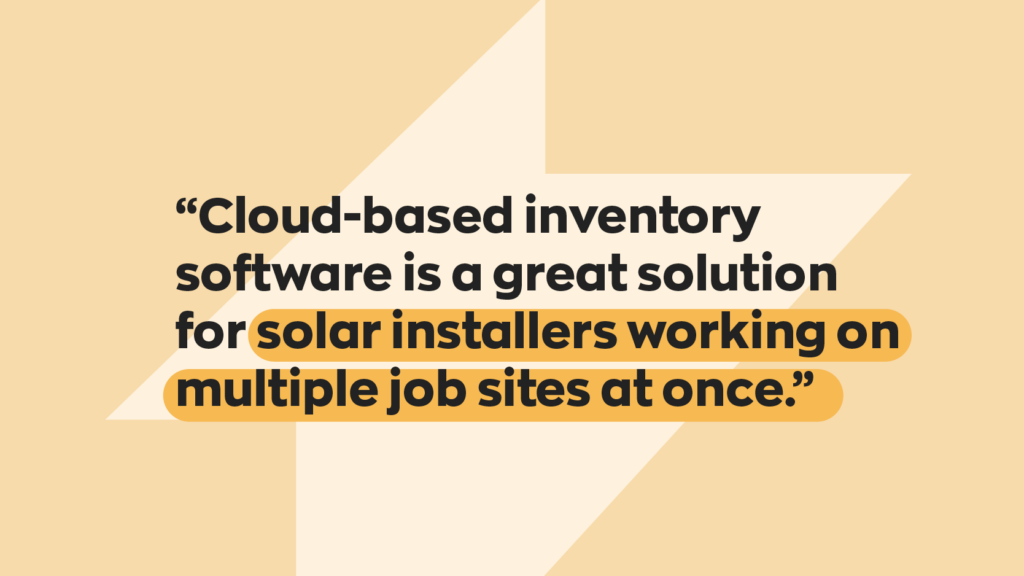
With so much at stake, it’s no wonder solar installers love our field service management software, inFlow. When you’re managing multiple installation projects at once, it’s easy to lose track of components. But with inFlow’s end-to-end inventory tracking, you’ll always have a clear view of where everything is across multiple job site locations.
In addition, inFlow makes warranty tracking easier by providing a full movement history for every product, right down to the serial number. We have mobile barcode scanning, reorder points, customer order histories, and many more features every solar installer needs!
Wrapping up
Joining a net metering program is a powerful incentive and, ultimately, a net positive for anyone considering joining the solar revolution. Solar installers should take advantage of this incentive to promote more business growth.
It’s well-known that consumers tend to lean toward companies that share their ideologies. So why not connect with your clients based on your shared core values?


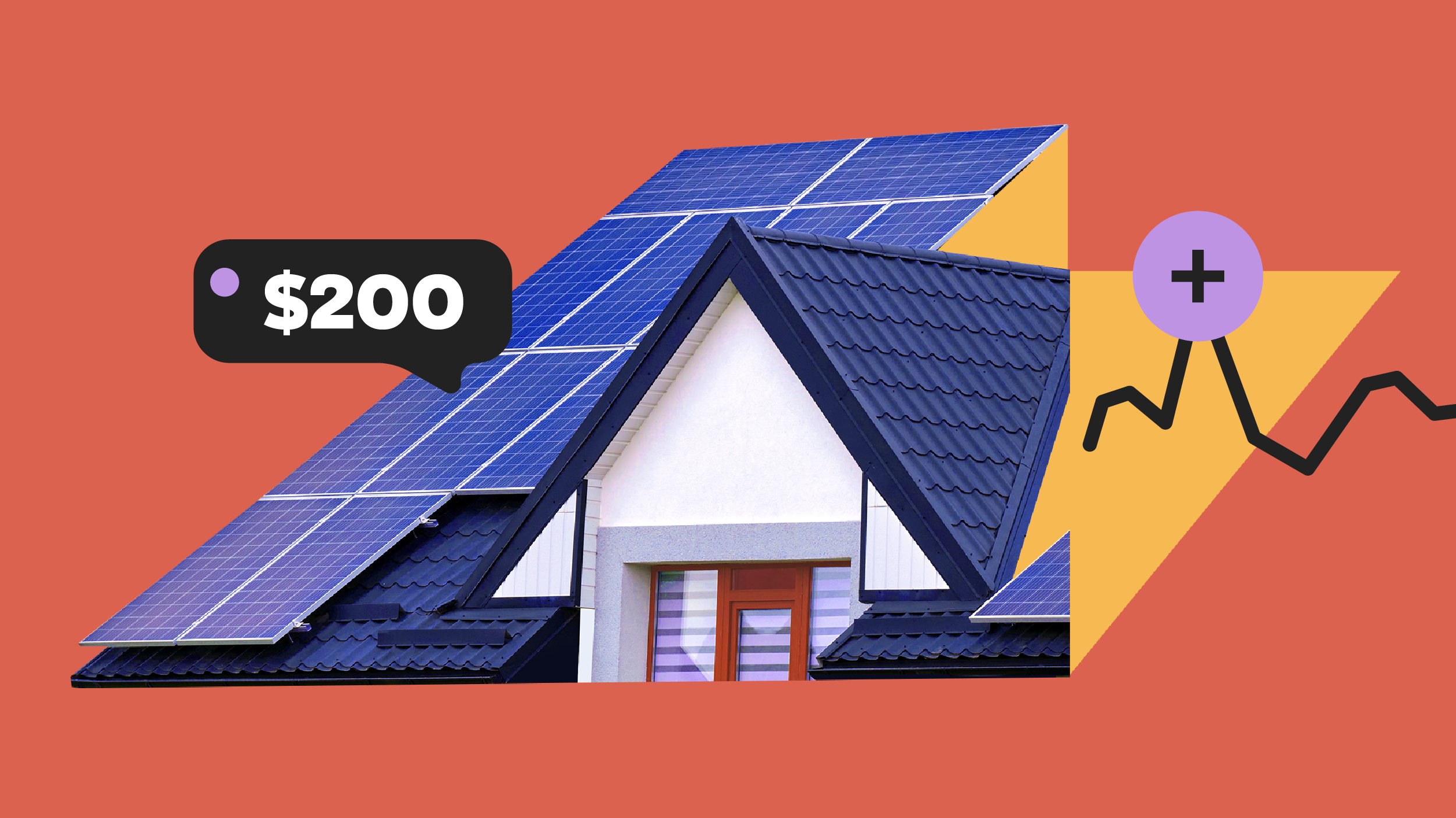



Give me details of solar panel equipments and services you are providing
Hey Scott,
Thanks for reading. We don’t offer products or services directly related to the solar installation industry. We provide solar installers with field service management software that they can use for all of their inventory management needs.
Cheers,
Jared
I NEED YOUR SERVICE
Hey Carla,
If you’d like to sign up for inFlow you can contact our sales team and they can help you out.
Cheers,
Jared